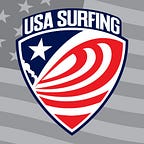Hydrating for peak performances in hot climates
Surfers compete in and prepare for a vast range of temperatures and conditions. In a sport that takes place in the water, it may be surprising to know just how much intense heat can affect performance. Fortunately, planning ahead with a few simple steps can make all the difference.
With the support of Hydro Flask, USA Surfing’s high-performance team shared their expertise and experience on managing heat and hydration. Surfing’s Olympic debut in Chiba, Japan and International Surfing Association (ISA) events in El Salvador all took place in intense heat, providing plenty of proof points.
Q. What are you doing to prepare surf athletes to surf their best in hot conditions?
The climate in El Salvador is hot! The average temperature for the months of May and June ranges between 94 and 82 degrees Fahrenheit. The water temperature averages around 86 degrees.
This extreme heat makes it important to be proactive with proven strategies to avoid heat related illnesses like cramps, fainting and dizziness, heat exhaustion, heat stroke, and low sodium concentration in the blood.
Q. Is there a sweet spot for how much water the normal person and/or recreational surfer should drink on the hottest days?
The sweet spot for the amount of water depends on each individual and their activity levels. It’s also important to consider sodium balance along with hydration. If a person drinks a lot of water but has an imbalance of sodium due to sweating, the water consumed is being flushed out of the body and not being absorbed. It can be hard to know if and how much you’re sweating in the water.
The key is to ensure you are consuming an electrolyte and carbohydrate to restore sodium imbalances. It also helps to consumer the majority of your water before mid- to -late day.
The best way to know if you’re hydrated is by routinely checking the color of your urine. If it’s clear, you’re likely getting an adequate amount of water. Anything dark or bright yellow indicates you need to increase your water inntake.
Q. Does the amount needed vary for elite surfers? How many ounces do you recommend your athletes drink in a day?
Since each of our athletes is a unique super human with his or her own dietary/consumption needs, we take a personalized approach.
During intense exercise in the heat, your body can lose between 2.6–5.3 pints of water per hour.
We encourage athletes to monitor their urine color throughout the day and provide hydration electrolytes with a high sodium content to add to their Hydro Flask bottles for consistent hydration and attention to sodium balance.
Eating salty foods, fruits and veggies with high water concentration, and water-retaining foods like chia seeds can help slow the effects of dehydration.
Q. Is it possible to drink too much water as an athlete? Is there a recommended limit for peak performance days, training days and/or active rest days?
There is a risk to drinking too much water if the body has low sodium levels which can lead to hyponatremia. This is when the body’s sodium’s level fall below 135 millimoles per liter and the body’s cells begin to swell. It can cause headaches and affect cognitive function and balance. The best indicator of hydration is urine color and that allows an athlete to monitor leading up to peak performance days, training days, and active rest days. The darker the urine the more dehydrated you are….the lighter your urine, you’re in the clear!
Q. Is there any correlation between increased risk of injury and dehydration?
There is a lot of research supporting the correlation between dehydration, and risk of injury and decreased performance. This is why we will be paying so much attention to proper hydration and cooling down the body’s core.
Using cooling towels and RE3 ice compression packs targeting the core helps surf athletes cool down significantly faster.
RE3 ice compression can be used as cryotherapy, but is also placed around the body’s core to accelerate cooling recovery.
Q. Do you have a favorite size Hydro Flask bottle that you’d recommend carrying? 21 oz, 32 oz, 40 oz, 64 oz?
It really depends on where we are going and what we are doing. If we’re going to the beach and needing to stay for several hours, a mix of 64 oz and smaller bottles is perfect. We can always be confident our drinks will stay cold and refreshing no matter what they choose.
The smaller Hydro Flasks make it easy to mix our hydration electrolyte packets to get the proper ratio into our surfer’s bodies. Sometimes surfers need a more concentrated mix.
Q. On the topic of hydration, is there anything that is top of mind as young athletes compete in El Salvador?
Proper hydration and cooling strategies will be key to helping our team perform at their best. The team and their support crew are preparing for hot and humid conditions in El Salvador. Hydro Flask is a core part of keeping athletes hydrated and healthy.
